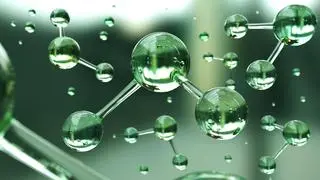Researchers at IIT-Madras have synthesised a tough, ceramic material that can conduct electricity and heat, which could possibly be used for storing hydrogen too.
A crystal structure found in certain materials called ‘MAB Phase’ gives them special properties such as high strength. In this M stands for a transition metal, like zirconium, molybdenum or titanium; A for either aluminium or silicon; and B for Boron.
Prof Somnath Bhattacharyya of the Department of Metallurgical and Materials Engineering and his team have developed a MAB phase layered ceramic — using tungsten, aluminium and boron — called WAlB. While WAlB is not a new material, known to be useful in nuclear shielding, Bhattacharyya and his team have developed a new process for making it, in a medium of molten salt. The resultant material is also of very high purity — about 98 per cent.
Bhattacharyya explained to Quantum that the material is a layered ceramic, with 2D layers of tungsten and boron, with aluminium in between. WAlB has been synthesised earlier at temperatures of 1400o C, but Bhattacharyya could do it at 800oC, at ambient pressure.
Calling the work a “breakthrough”, Dr Varun Natu, scientist at National Chemical Laboratory, Pune, observes that synthesising WAlB has traditionally proven difficult, resulting in only small crystals with low yield. However, “Bhattacharyya’s team has demonstrated not only large-scale synthesis of WAlB but also a method that uses a molten salt as a sheath. This approach significantly reduces production costs and simplifies potential future scaling, making WAlB a much more viable candidate for real-world applications.”
This material could be used as a semiconductor or for hydrogen storage, he said. Asked if the industry could take up production of this MAB at scale, Bhattacharyya said it was possible, as repeated synthesis by his students got the same, high purity material.









Comments
Comments have to be in English, and in full sentences. They cannot be abusive or personal. Please abide by our community guidelines for posting your comments.
We have migrated to a new commenting platform. If you are already a registered user of TheHindu Businessline and logged in, you may continue to engage with our articles. If you do not have an account please register and login to post comments. Users can access their older comments by logging into their accounts on Vuukle.